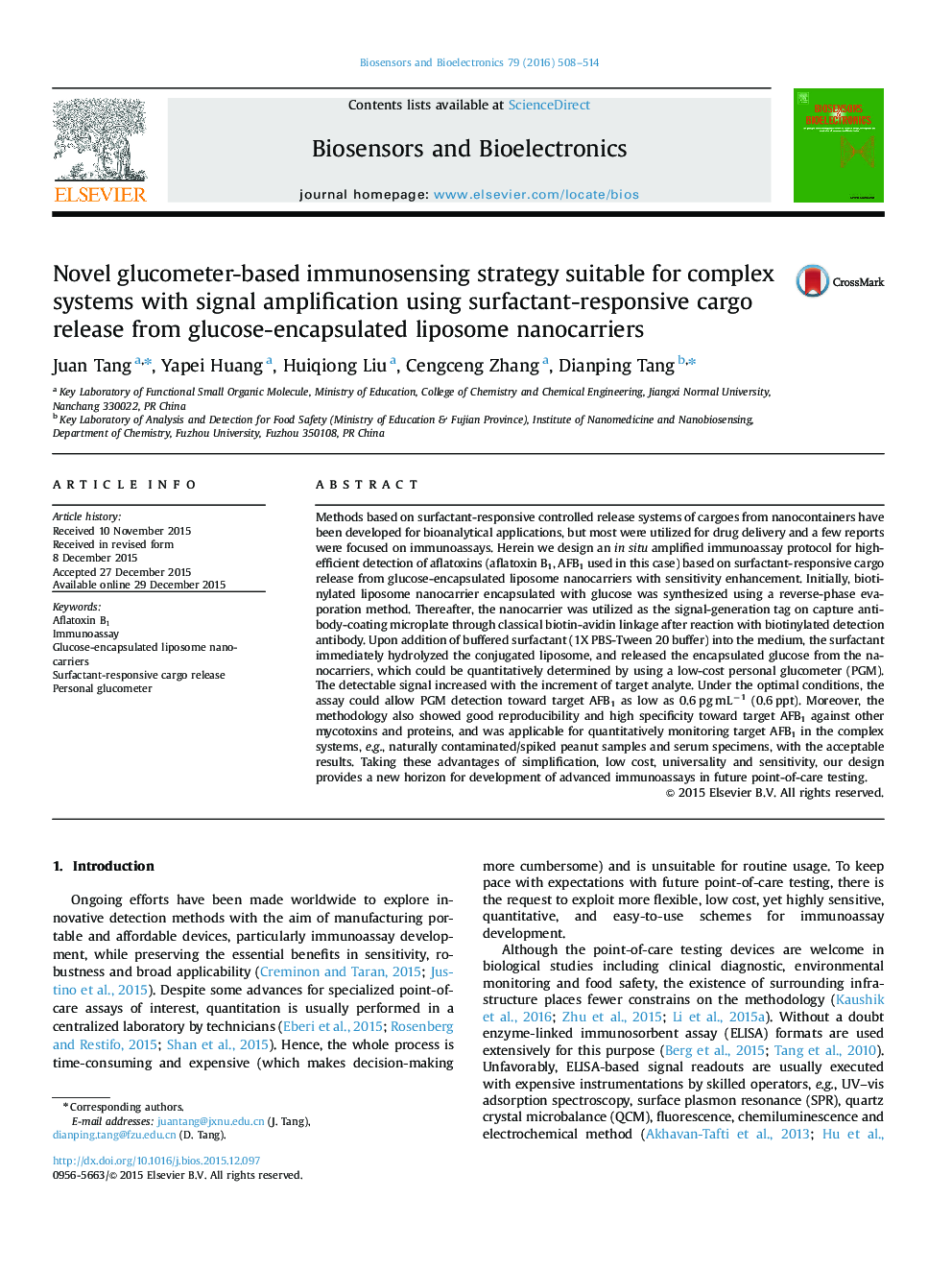| کد مقاله | کد نشریه | سال انتشار | مقاله انگلیسی | نسخه تمام متن |
|---|---|---|---|---|
| 7231133 | 1470952 | 2016 | 7 صفحه PDF | دانلود رایگان |
عنوان انگلیسی مقاله ISI
Novel glucometer-based immunosensing strategy suitable for complex systems with signal amplification using surfactant-responsive cargo release from glucose-encapsulated liposome nanocarriers
ترجمه فارسی عنوان
استراتژی ایمن سازی مبتنی بر گلوکومتر جدید مناسب برای سیستم های پیچیده با تقویت سیگنال با استفاده از واکنش بار واکنش دهنده سورفاکتانت از نانوذرات لیپوزوم کپسوله شده گلوکز
دانلود مقاله + سفارش ترجمه
دانلود مقاله ISI انگلیسی
رایگان برای ایرانیان
موضوعات مرتبط
مهندسی و علوم پایه
شیمی
شیمی آنالیزی یا شیمی تجزیه
چکیده انگلیسی
Methods based on surfactant-responsive controlled release systems of cargoes from nanocontainers have been developed for bioanalytical applications, but most were utilized for drug delivery and a few reports were focused on immunoassays. Herein we design an in situ amplified immunoassay protocol for high-efficient detection of aflatoxins (aflatoxin B1, AFB1 used in this case) based on surfactant-responsive cargo release from glucose-encapsulated liposome nanocarriers with sensitivity enhancement. Initially, biotinylated liposome nanocarrier encapsulated with glucose was synthesized using a reverse-phase evaporation method. Thereafter, the nanocarrier was utilized as the signal-generation tag on capture antibody-coating microplate through classical biotin-avidin linkage after reaction with biotinylated detection antibody. Upon addition of buffered surfactant (1X PBS-Tween 20 buffer) into the medium, the surfactant immediately hydrolyzed the conjugated liposome, and released the encapsulated glucose from the nanocarriers, which could be quantitatively determined by using a low-cost personal glucometer (PGM). The detectable signal increased with the increment of target analyte. Under the optimal conditions, the assay could allow PGM detection toward target AFB1 as low as 0.6 pg mLâ1 (0.6 ppt). Moreover, the methodology also showed good reproducibility and high specificity toward target AFB1 against other mycotoxins and proteins, and was applicable for quantitatively monitoring target AFB1 in the complex systems, e.g., naturally contaminated/spiked peanut samples and serum specimens, with the acceptable results. Taking these advantages of simplification, low cost, universality and sensitivity, our design provides a new horizon for development of advanced immunoassays in future point-of-care testing.
ناشر
Database: Elsevier - ScienceDirect (ساینس دایرکت)
Journal: Biosensors and Bioelectronics - Volume 79, 15 May 2016, Pages 508-514
Journal: Biosensors and Bioelectronics - Volume 79, 15 May 2016, Pages 508-514
نویسندگان
Juan Tang, Yapei Huang, Huiqiong Liu, Cengceng Zhang, Dianping Tang,
